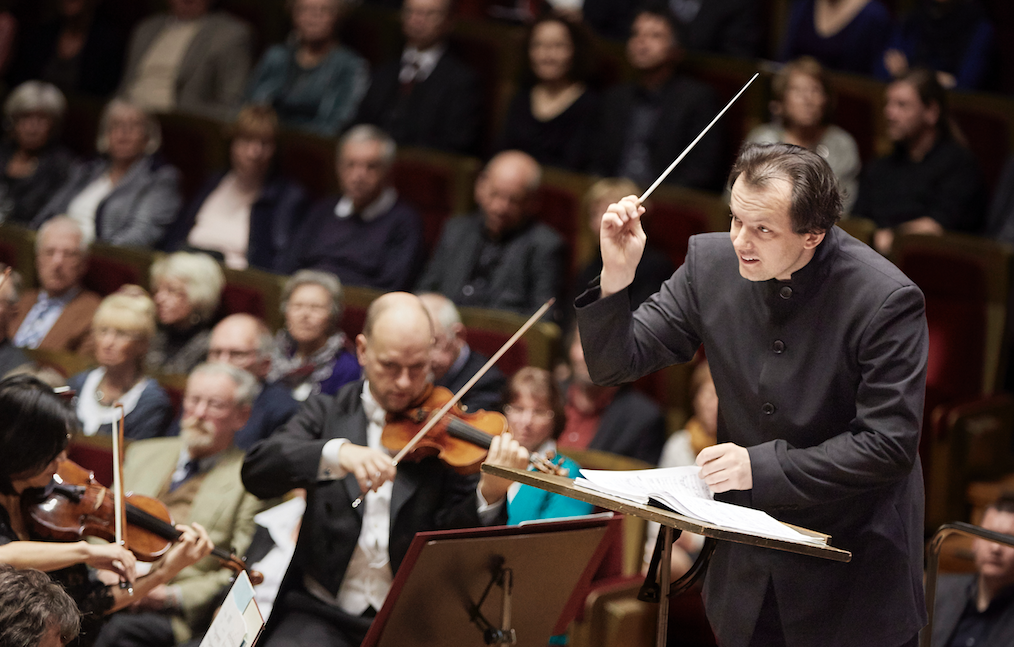Like the world…

There are some concerts that take listeners through more than just their own lives, to the universality of all lives lived. Andris Nelsons and the Gewandhaus Orchestra’s extremely intense performance of Mahler’s 3rd Symphony had precisely this effect, one which was fully in consonance with its composer’s conceptions: “A symphony must be like the world. It must embrace everything.”
Mahler changed his mind about both the contents and the concept of his 3rd Symphony several times during the eight years over which he wrote it. He originally intended it to be strictly programmatic, with descriptive titles for all its movements: Pan Awakes: Summer comes marching in, What the Flowers in the Meadow Tell Me, What the Animals in the Forest Tell Me, What Humanity Tells Me, What the Angels Tell Me and finally, the transcendent Adagio, What Love Tells Me. However, by the time the work was premiered in 1902, most of these titles had disappeared: Mahler explained that “there is no modern music without its underlying program. But no music is worth anything if you first have to tell the listener what experience lies behind it, respectively, what he is supposed to experience in it… Some residue of mystery always remains, even for the creator.” The reinstatement of these titles in concerts such as this one reflects the fact that modern listeners tend to be less literal-minded, and can be relied upon to treat titles as clues rather than firmly embedded signposts to a composer’s inspirations.
For such a cosmic vision, Mahler needed (in addition to a mezzo-soprano soloist, a women’s chorus and a boys’ chorus) a huge orchestral palette: ‘as many strings as possible’, four flutes, four oboes, three clarinets, two high clarinets, four bassoons, eight horns, four trumpets, posthorn, four trombones, tuba, two harps, and a huge array of percussion. A vast temporal expanse was also needed — leading to Mahler’s longest piece (~ 100 minutes) as well as the longest symphony in the standard repertoire.
The challenge of this symphony, though, is about far more than generating a big sound from a large orchestra for a long time; it is about digesting its complexity and extracting its essence, so that listeners are drawn into the composer’s vision of creation, of nature, life and love. Sustaining audience interest from big band marches through gleeful children’s choruses to a finale of poignant irreversibility, is where Andris Nelsons’ triumph lay; a triumph that only gained in urgency and immediacy because he was called upon to conduct the work at very short notice.
One of the rather common failings of most renditions of this symphony is that the first movement is insufficiently explored, because, in the words of one of Mahler’s peers, it contains ‘much that is ugly’. The opening horn solo, a tragic reformulation of the opening theme of the last movement of Brahms’ first Symphony, gives way to ominous rumblings from the brass section, promising yet more doom, until suddenly the woodwinds bring in light themes, which later morph into popular marches. This competition between the light fantastic and its brooding, obsessional alter ego, makes way for the reentry of the opening theme, this time in a fully major key that is sustained until the triumphal end. Mahler’s pioneering juxtaposition of the popular music of his time with the sublimity of his slow movements, was a device which was comprehensively exploited by Nelsons; all contrasts were explored, the ‘ugly’ was not glossed over, so that a full catharsis of emotions could be unleashed. Nelsons also brought out the fact that nothing is quite as it seems in the apparent gaiety of Mahler’s dance music: the opening minuet of the second movement had a mocking undertow that naturally led to its dissolution, while the scherzo that opened the third movement, interrupted at several points by a poignant and contemplative post-horn solo, gained a retrospective, darker, hue. The melancholic introspection of Nietzche’s ‘O Mensch’ (‘O Man! Take heed! / What says the deep midnight?’), sung with great feeling by Sarah Connolly, followed naturally in this half-light of mutable emotions; while the immediate transition to the world of bells and angels, of divine forgiveness and joyful innocence conjured up by ‘Es sungen drei Engel’ (‘Three angels sang a sweet song’)— delightfully sung by the Gewandhaus and MDR Radio Choirs — came as a genuine and wonderful surprise.
But it was in his generous conception of the concluding Adagio with its sustained and elegiac intensity, that Nelsons was truly resplendent. From a hushed beginning, the essence of yearning was distilled from the strings, which gave way to the brass’s heartrending crescendo embodying Mahler’s cri de coeur: ‘Father, look upon my wounds! / Let no creature be lost!’; the interplay of pain and consolation, warmth and desolation continued until the striking nobility of the closing bars, where the brass and timpani combined to look ahead to the glorious harmonies and triumphant timpani of Mahler’s Eighth Symphony, with their promise of resurrection and divine love.





